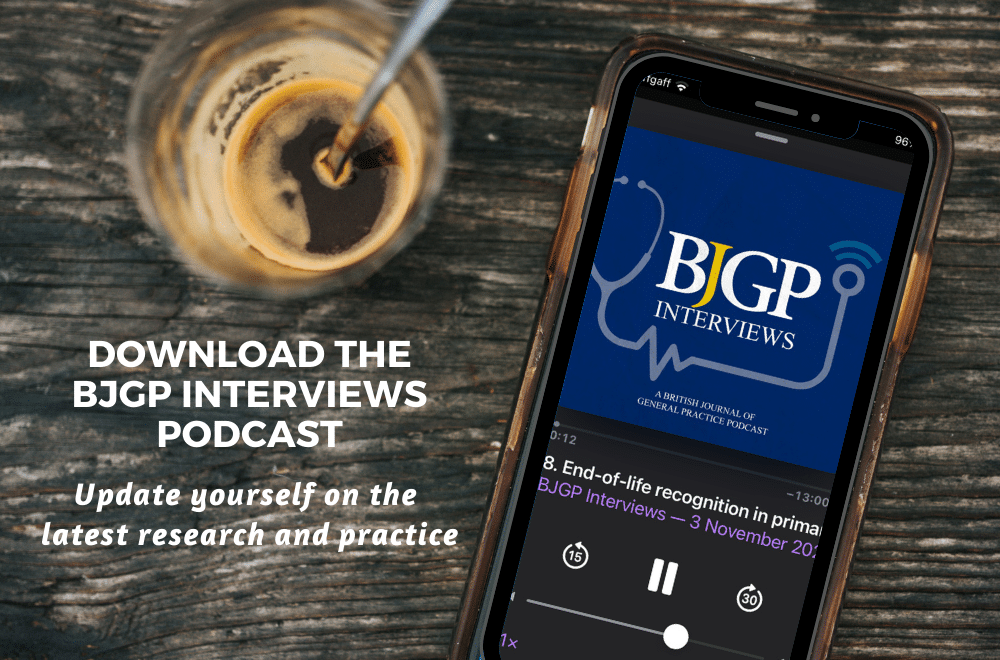Blair H Smith is a GP and Clinical Professor at the University of Dundee, and National Lead Clinician for Chronic Pain for the Scottish Government. He is on Twitter: @blairhsmith1H.
Lesley A Colvin is a Pain Specialist and Clinical Professor at the University of Dundee, and Vice Chair of the Scottish Intercollegiate Guideline Network.
Angela Donaldson-Bruce is the Scotland Director for Versus Arthritis and has lived experience of chronic pain.
Audrey Birt is a Leadership and Wellbeing Coach, and has lived experience of chronic pain.
We note the concerns expressed by Abdel Shaheed et al in their recent editorial Drugs for Chronic Pain.1 They expressed important anxieties about the availability of pharmacological options to GPs treating chronic pain, which are likely to be restricted if the current draft National Institute for Health and Care Excellence (NICE) guideline is implemented.2
Their concerns include: 1) conclusions, drawn by NICE, based on inconsistent application of the International Classification of Diseases eleventh revision (ICD-11) definition of ‘chronic primary pain’; and 2) failure to apply this definition at all to the evidence that they reviewed.
As clinicians treating chronic pain, people living with chronic pain, and advisors on national policy around chronic pain management, we share these concerns, and add the following observations:
1. Lack of evidence of effectiveness at population level does not equate to lack of effectiveness for all individuals. As Andrew Moore et al argued, ‘we need to move away from a focus on average response and seek what works for each patient’.3
Chronic pain has such an important impact on the lives of people who live with it that we need every tool available help in its management
In general, people in pain do not want to have to take medication, but, in the absence of other effective options, still want to live their life. Failure to offer a trial of potentially effective drugs to all patients means that many will be denied the opportunity of relief from pain and distress.
The key is in shared decision making, which includes a range of options to meet the biopsychosocial needs of the individual, early review, and adjustment or cessation of any prescribing according to response and side effects. While there are recognised potential harms from many analgesics, poorly controlled chronic pain itself has a significant detrimental impact on individuals.
2. ‘Chronic primary pain’, as a formal entity, is a new concept, defined by the World Health Organization and the International Association for the Study of Pain (IASP) for ICD-11.4 It can refer to conditions in which pain is the primary disease; importantly, however, it can change to one of the six ‘chronic secondary pain’ diagnoses available in ICD-11 (for example, chronic cancer pain and chronic neuropathic pain) as more information comes to light from investigations.
In primary care especially, it may therefore be a ‘holding diagnosis’, evolving eventually into one for which one or more of the standard analgesic medications is recommended by NICE. These drugs would be withheld from the patient who is undergoing these investigations (or for whom these investigations might not normally be considered).
3. In Scotland, the standard for this clinical area is the Scottish Intercollegiate Guideline Network (SIGN) guideline Managing Chronic Pain.5 Updated in 2019, this is not consistent with the draft NICE guideline, in that it recommends the use of analgesics in specific circumstances.
For example, SIGN recommends that:
‘Opioids should be considered for short- to medium-term treatment of carefully selected patients with chronic non-malignant pain, for whom other therapies have been insufficient, and the benefits may outweigh the risks of serious harms such as addiction, overdose, and death.’
A detailed algorithm is provided to guide its safe and effective use, in the context of shared agreement, early and frequent review, and appropriate cessation. Non-pharmacological approaches are also encouraged. These recommendations are unlikely to change following publication of the NICE guideline.
4. Similarly, while emphasising the need for caution and the use of non-pharmacological treatments, the IASP states that, ‘There may be a role for medium-term, low-dose opioid therapy in carefully selected patients with chronic pain who can be managed in a monitored setting’.6
The Scottish government responded to NICE during the consultation phase of their draft guideline, noting the above potential deleterious impact the draft recommendations could have on people living with chronic pain, and on clinicians helping them to manage it.
Chronic pain has such an important impact on the lives of people who live with it that we need every tool available in our toolbox to help in its management. Now is not the time to reduce our options.
Competing interests
All authors are members of the National Advisory Committee for Chronic Pain (Scottish Government). Blair H Smith and Lesley A Colvin led the revision of the 2019 SIGN guideline, noted in this article, focusing on opioids. There are no other conflicts of interest.
References
1. Shaheed CA, Machado GC, Underwood M. Drugs for chronic pain. Br J Gen Pract 2020; DOI: https://doi.org/10.3399/bjgp20X713549.
2. National Institute for Health and Care Excellence. Guideline. Chronic pain in over 16s: assessment and management. Draft for consultation, August 2020. 2020. https://www.nice.org.uk/guidance/gid-ng10069/documents/draft-guideline (accessed 27 Jan 2021).
3. Moore A, Derry S, Eccleston C, Kalso E. Expect analgesic failure; pursue analgesic success. BMJ 2013; 346: f2690.
4. Treede R-D, Rief W, Barke A, et al. Chronic pain as a symptom or a disease: the IASP Classification of Chronic Pain for the International Classification of Diseases (ICD-11). Pain 2019; 160(1): 19–27.
5. Scottish Intercollegiate Guideline Network. Management of Chronic Pain. 2019. https://www.sign.ac.uk/our-guidelines/management-of-chronic-pain (accessed 27 Jan 2021).
6. International Association for the Study of Pain. IASP statement on opioids. 2018. https://www.iasp-pain.org/Advocacy/Content.aspx?ItemNumber=7194 (accessed 27 Jan 2021).
Featured photo by Diana Polekhina on Unsplash





Whilst the argument made by Professor Blair is a reasoned one , it assumes that now and in the past, the shared decision is/ was based on availability of all therapeutic options that NICE have recommended. Also that all options are readily available in good time and in sufficient quantity. This is far from the case.
As a former GP (now involved in delivering psychosocial predominant community pain services) the only readily available intervention was drugs and injections and so that’s what we did and patient expectation became that . When my patients eventually reached Pain Services in hospital the medication was changed to ” fancy drugs” that GPs knew little of and injections GP couldn’t provide . This was chronic pain – a legacy we all know the outcome of in terms of dependence on services which could not deliver and ultimately failed those on large doses of opiates,other addictive potions and often 3 monthly Injections. As GPs we saw the social impact of this on the whole family but felt helpless other than to reach for the prescription pad for them all.
Modern pain science refutes this historical approach which I am sure you all have moved from. Use of drugs and other passive treatme to may suit the immediate choice of many people at present but the informed aspect is key.as is patient centred care. I am unconvinced patient have ever been informed rather than promised. I agree that use of analgesia may be justified but only when all other measures have been tried and failed. In the UK there are few places where those “other” modalities have been funded appropriately and provided in sufficient amount . This leaves patients and GPs with few options and the prescription and referral pad on the desk remains the opt out
Putting your view and mine together our patients need options and choice and good information . As pain providers we must ensure we provide information that is evidence based with the patient at the centre not ourselves. If that is drugs so be it . It seems hard to justify that will be anything other than a minority and in reality the need for such specialist arms in pathways will be small given the studies that inform NICE and wider opinion . SIGN will surely catch up.
We must educate the public long before they develop pain as to what pain is and what it isn’t. Once that is achieved, funding can be appropriately apportioned and indeed the epidemic of chronic pain reduce significantly rather like Covid . It is preventative vaccination that is the salvation in Covid not dexamethasone – an analogy that can be transferred to this topic
PS. SIGN 136 also includes evidence-based guidance for all other modalities of treatment for chronic pain, including psychological, physical and alternative. We have only focused on opioids for the purposes of this brief article.
My PS followed another, longer comment which was submitted, but which hasn’t appeared (yet). Basically I was agreeing that we need psychological and social and spiritual approaches to managing pain alongside (and, yes, ideally, instead of drugs), but that sometimes drugs are needed to allow people to increase their function. The key there is to review the drugs, and reduce/stop them when appropriate. I was also disagreeing that drugs should only be prescribed after “other measures have been tried and failed” – if that is the situation, then all that remains for these people is drugs. Judicious use at an earlier stage might allow the “other measures” to be successful when they otherwise wouldn’t, and might also lead to a time when drugs are no longer required. Finally, of course, I was thanking you for your comment and interest, Graeme. Best wishes. Blair
[…] with chronic secondary pain, we share the concerns raised by Blair Smith and Lesley Colvin, in their letter to the British Journal of General Practice of 2nd February, that “chronic pain has such an important impact on the lives of people who live with it that we […]